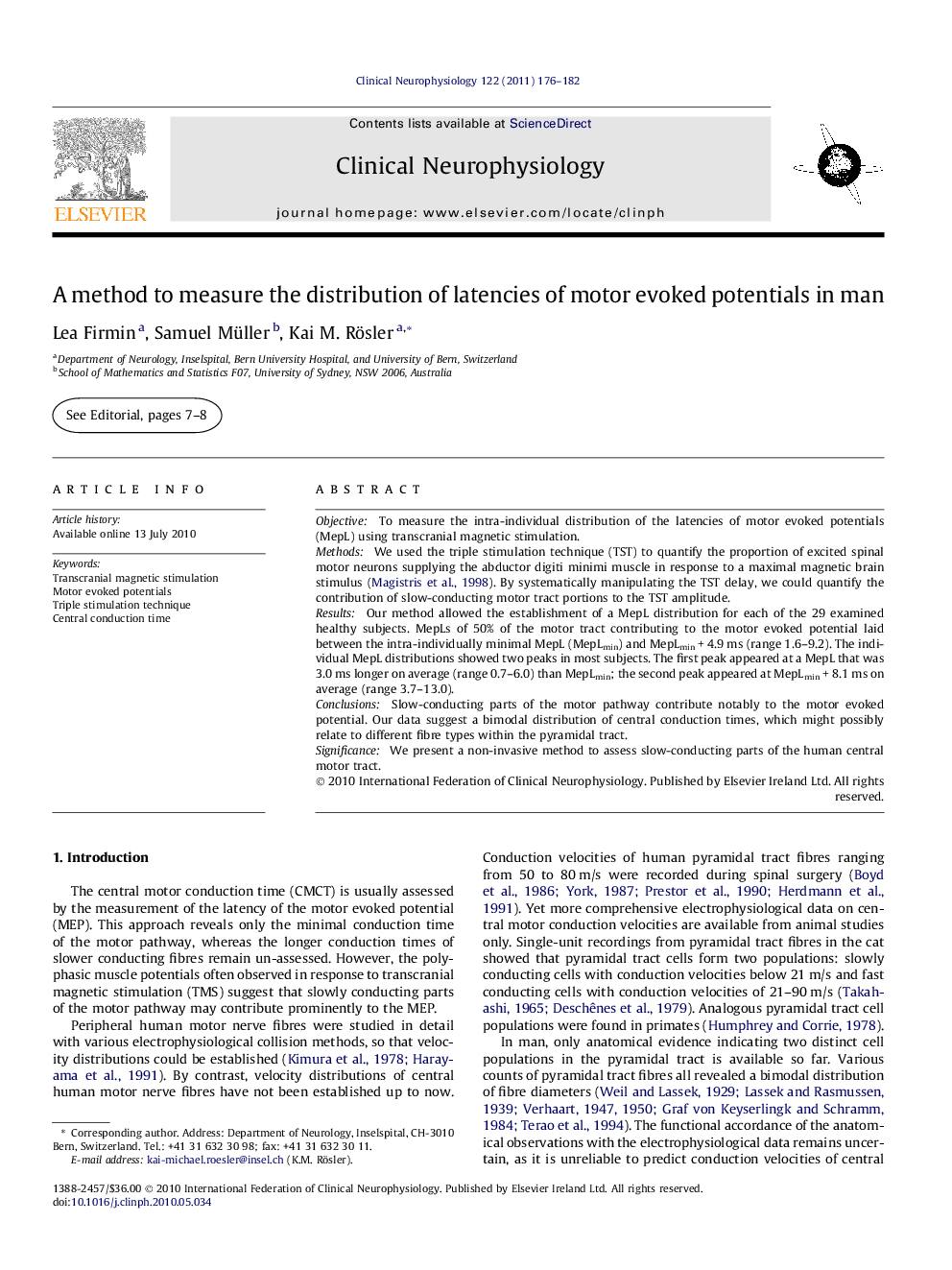| Article ID | Journal | Published Year | Pages | File Type |
|---|---|---|---|---|
| 3044259 | Clinical Neurophysiology | 2011 | 7 Pages |
ObjectiveTo measure the intra-individual distribution of the latencies of motor evoked potentials (MepL) using transcranial magnetic stimulation.MethodsWe used the triple stimulation technique (TST) to quantify the proportion of excited spinal motor neurons supplying the abductor digiti minimi muscle in response to a maximal magnetic brain stimulus (Magistris et al., 1998). By systematically manipulating the TST delay, we could quantify the contribution of slow-conducting motor tract portions to the TST amplitude.ResultsOur method allowed the establishment of a MepL distribution for each of the 29 examined healthy subjects. MepLs of 50% of the motor tract contributing to the motor evoked potential laid between the intra-individually minimal MepL (MepLmin) and MepLmin + 4.9 ms (range 1.6–9.2). The individual MepL distributions showed two peaks in most subjects. The first peak appeared at a MepL that was 3.0 ms longer on average (range 0.7–6.0) than MepLmin; the second peak appeared at MepLmin + 8.1 ms on average (range 3.7–13.0).ConclusionsSlow-conducting parts of the motor pathway contribute notably to the motor evoked potential. Our data suggest a bimodal distribution of central conduction times, which might possibly relate to different fibre types within the pyramidal tract.SignificanceWe present a non-invasive method to assess slow-conducting parts of the human central motor tract.
